
- Home
- India
- World
- Premium
- THE FEDERAL SPECIAL
- Analysis
- States
- Perspective
- Videos
- Sports
- Education
- Entertainment
- Elections
- Features
- Health
- Business
- Series
- In memoriam: Sheikh Mujibur Rahman
- Bishnoi's Men
- NEET TANGLE
- Economy Series
- Earth Day
- Kashmir’s Frozen Turbulence
- India@75
- The legend of Ramjanmabhoomi
- Liberalisation@30
- How to tame a dragon
- Celebrating biodiversity
- Farm Matters
- 50 days of solitude
- Bringing Migrants Home
- Budget 2020
- Jharkhand Votes
- The Federal Investigates
- The Federal Impact
- Vanishing Sand
- Gandhi @ 150
- Andhra Today
- Field report
- Operation Gulmarg
- Pandemic @1 Mn in India
- The Federal Year-End
- The Zero Year
- Science
- Brand studio
- Newsletter
- Elections 2024
- Events
- Home
- IndiaIndia
- World
- Analysis
- StatesStates
- PerspectivePerspective
- VideosVideos
- Sports
- Education
- Entertainment
- ElectionsElections
- Features
- Health
- BusinessBusiness
- Premium
- Loading...
Premium - Events
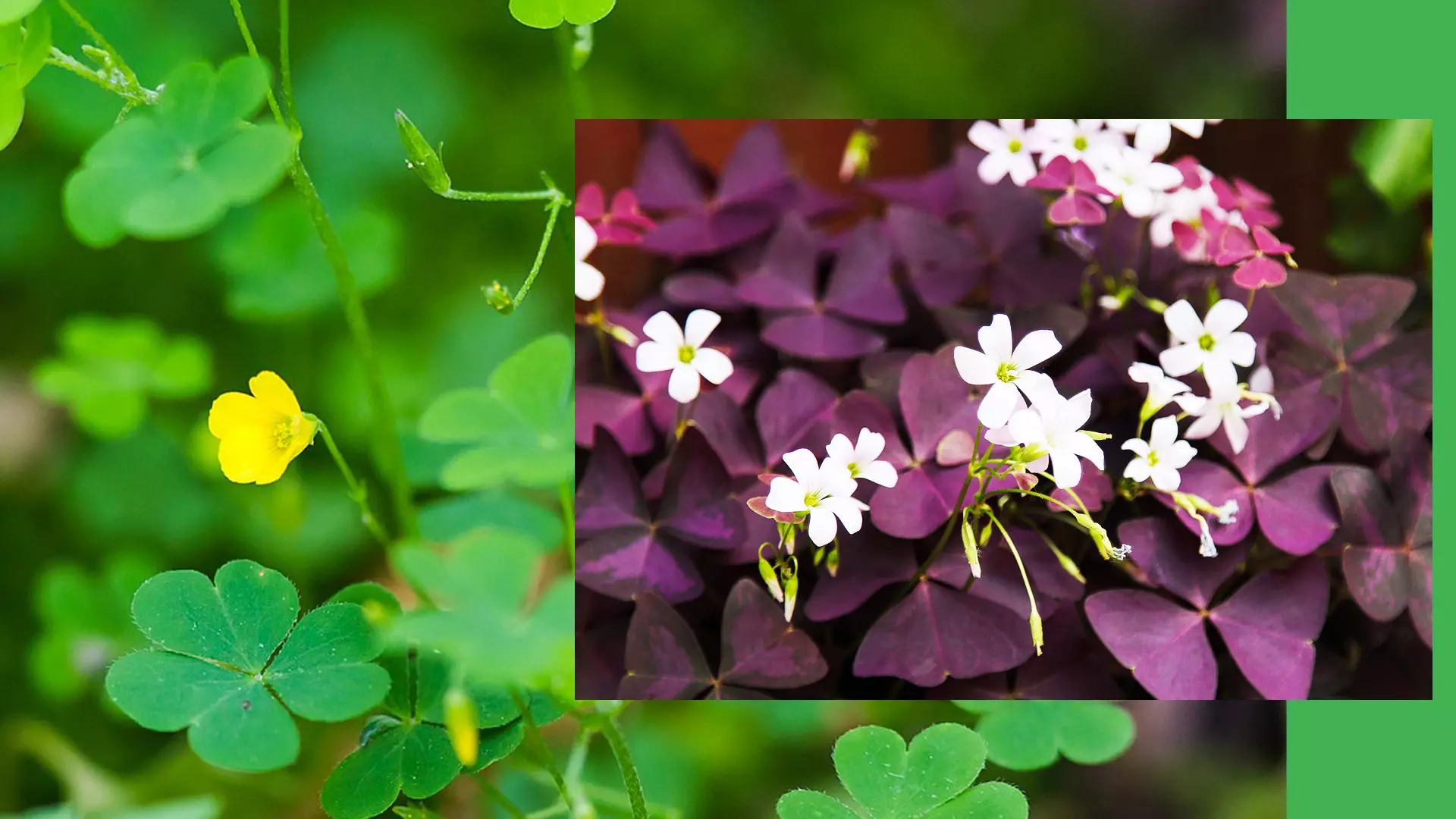
Dr Yuya Fukano tried to make his one-year-old daughter, Misuzu, fall asleep.He is an associate professor at the Graduate School of Horticulture at Chiba University, Japan, researching the ecology of urban plants.To calm the baby and make her sleep, he cuddled, rocked, and shooshed. Like most days, he took Misuzu for a stroll around the apartment to soothe her before making her sleep....
Dr Yuya Fukano tried to make his one-year-old daughter, Misuzu, fall asleep.
He is an associate professor at the Graduate School of Horticulture at Chiba University, Japan, researching the ecology of urban plants.
To calm the baby and make her sleep, he cuddled, rocked, and shooshed. Like most days, he took Misuzu for a stroll around the apartment to soothe her before making her sleep. Feeling warmth and love, the baby slowly dozed.
Something caught his eye as he was slowly walking.
All around the apartment, the small patches of exposed open ground were covered with thick vegetation. Among the wild growth of grass and scrub, was creeping woodsorrel. It is not uncommon to see creeping woodsorrel, a common weed plant, growing lush in the sparse urban grasslands and parks but also popping up here and there through the cleaves of the cracks in the asphalt sidewalks. There are two primary varieties: most plants sport greenish leaves, but some have reddish or purplish leaves.
Suddenly, it struck him that the creeping woodsorrel growing around his apartment, lifting their heads from the footpaths or gaps between the bricks, were all red-leaved. However, he recalled that those growing in urban meadows, lawns, and green spaces were all lush green; not even a single red variety was to be seen.
“Observing the urban weeds during the walk, I noticed that the leaves of the urban Oxalis were redder compared to the leaves of the suburban farmland,” says Dr Yuya Fukano.
The researcher in him awakened. “I mentioned this idea to my colleagues, and they immediately responded that this could be an interesting research topic,” he adds.
He and his team explored the mystery of why green-leaved variety elects green spaces while red-leaved fancy urban spaces.
Oxalis corniculata
Creeping woodsorrel, that is, Oxalis corniculata, is as common as grass and is found all over the world. It is, in fact, the third most extensive distribution of vascular plant species worldwide. It grows everywhere, from farmland, riverbanks, lawns, parks, seminatural grassland, roadsides, railway tracks, and wherever it can get a foothold. With trifoliate leaves subdivided into three heart-shaped leaves, sour yellow flowers with narrow, creeping stems, creeping woodsorrel growing as a weed in backyards, lawns, gardens, wastelands, and agricultural fields are hard to miss.
Delicate-appearing, low-growing herbaceous Oxalis corniculata is indigenous to Southeast Asia. During the sixteenth and seventeenth centuries, through the European travellers, it spread and today is cosmopolitan worldwide. It is considered a herb called Ambashta, Amlapatrika, or Amlika in Sanskrit. It is also known as Amrit Sak (Hindi), Puliyarai (Tamil), Soru tengeshi (Asamiya), Kottampulichan (Malayalam) and Pulicheerai (Irula). While the Oxalis corniculata L has green leafs, O. corniculata L. f. atropurpurea and O. corniculata L. f. Rubrifolia have red and purple leaves, respectively. These are the three major phenotypes of the plant.
Field day
An idea can germinate from a chance observation, but to establish a hypothesis, systematic observation is required. Dr Yuya Fukano and his team undertook systematic field observations. The group included Dr Wataru Yamori from the University of Tokyo, Dr Yuuya Tachiki from Tokyo Metropolitan University, and Dr. Kenta Shirasawa from the Kazusa DNA Research Institute.
The researchers performed transect surveys in three locations near Tokyo. They encountered urban and green spaces while walking along the transect path. A 20 square meter area was taken as a unit, and the researchers classified this into urban space, green space or in-between.
Urban areas typically have impervious surfaces. The ground surface is often covered with asphalt, concrete, brick, or stone. Nevertheless, in urban regions, there are green spaces, such as parks, lawns, and wastelands, where weeds of many kinds naturally grow. However, even a park may have a paved walkway with impervious tiles. The team defined any 75% or more area covered with impervious surface as 'urban space' and any covered with less than 25% as 'green space'. Those between 75% and 25% were considered in-between. In each transect, ten plots, five urban and five green space, was selected, and the proportion of the green-leaved and red-leaved plants was computed. They expanded the observation to 12 farmland (nonurban populations) and 14 urban sites (urban populations) around the Tokyo metropolis.
Further, the researchers collected data from world over using the citizen science iNaturalist platform (https://inaturalist.org). The analysis of 9,561 observations showed a clear difference in the distribution of green and red leaves between urban and green spaces. “Green-leaved individuals were dominant in green spaces, and the frequency of red-leaved individuals was higher in urban spaces,” says Dr Fukano
Urban spaces – emerging ecological niche
Since the Industrial Revolution in the 1750s, urban spaces have been expanding. Today, nearly 3% of global landmass is urban area. Urban areas are human-made ecologies, having unique characteristics.
One of the characteristics of human-made urban spaces is paved ground. The covered surfaces are impermeable. Made of brick, stone, asphalt, and concrete, they absorb incoming solar energy and radiate heat. The paved ground and the tarred roads are often surrounded by high-rise concrete buildings that trap heat. The buildings, sidewalks and cemented surfaces can retain heat and release it slowly, depriving the urban areas of the cool relief found in rural areas at night. The much warmer temperatures than the nearby rural regions experienced in cities is called ‘urban heat island’.
Often, the cities have little free-roaming grazing animals, like goats or cows. Hence, plants hardly face predatory threats from animals. Further, a plant growing from a crevice between the brick-laid pavement or a pothole is isolated and faces no plant-plant competition.
Change in the ecological niche drives evolutionary changes. It is a well-known textbook case of how the light-coloured peppered moths better camouflaged in pre-industrial era British cities faced evolutionary pressure once the ambience became sooty with the coal smoke. In the altered landscape, dark-coloured peppered moths are better camouflaged, and the colour of the moth population shifted from light to dark in 19th-century England.
In the last 100 years, due to rapid urbanisation, the annual mean temperature of Tokyo has increased by about 3°C. The researchers speculated that “the high frequency of red-leaved individuals in urban areas may be due to rapid adaptive evolution in response to urban heat islands”.
Consequences of being red
In many deciduous plants, ageing leaves, about to be shed during the fall, turn brilliant red during autumn. In autumn, the chlorophyll breaks down and unmasks the already present carotenoid pigments, turning the colour of the leaves to yellow and orange. However, the appearance of red leaves in plants such as maples, oaks, dogwoods and viburnums during fall results from fresh excess synthesis of red pigment, anthocyanins.
Until recently, it was unclear why anthocyanins are synthesised in autumn leaves just before they are divested. Why would the plant invest scarce resources in synthesising a chemical in soon-to-be-discarded leaves if it does not have any beneficial function?
Combined with a copious amount of green chlorophyll, the leaf rich in anthocyanins appears brown or black, mimicking dead foliage. Most leaf-eating insects lack red receptors in their eye; hence, even bright red leaves appear dark to them. Therefore, for most leaf-eating insects, red leaves are unappetising and repugnant. Following this, botanists consider that red leaf might be a deterrence mechanism, ‘warning colouration’ to deter herbivores.
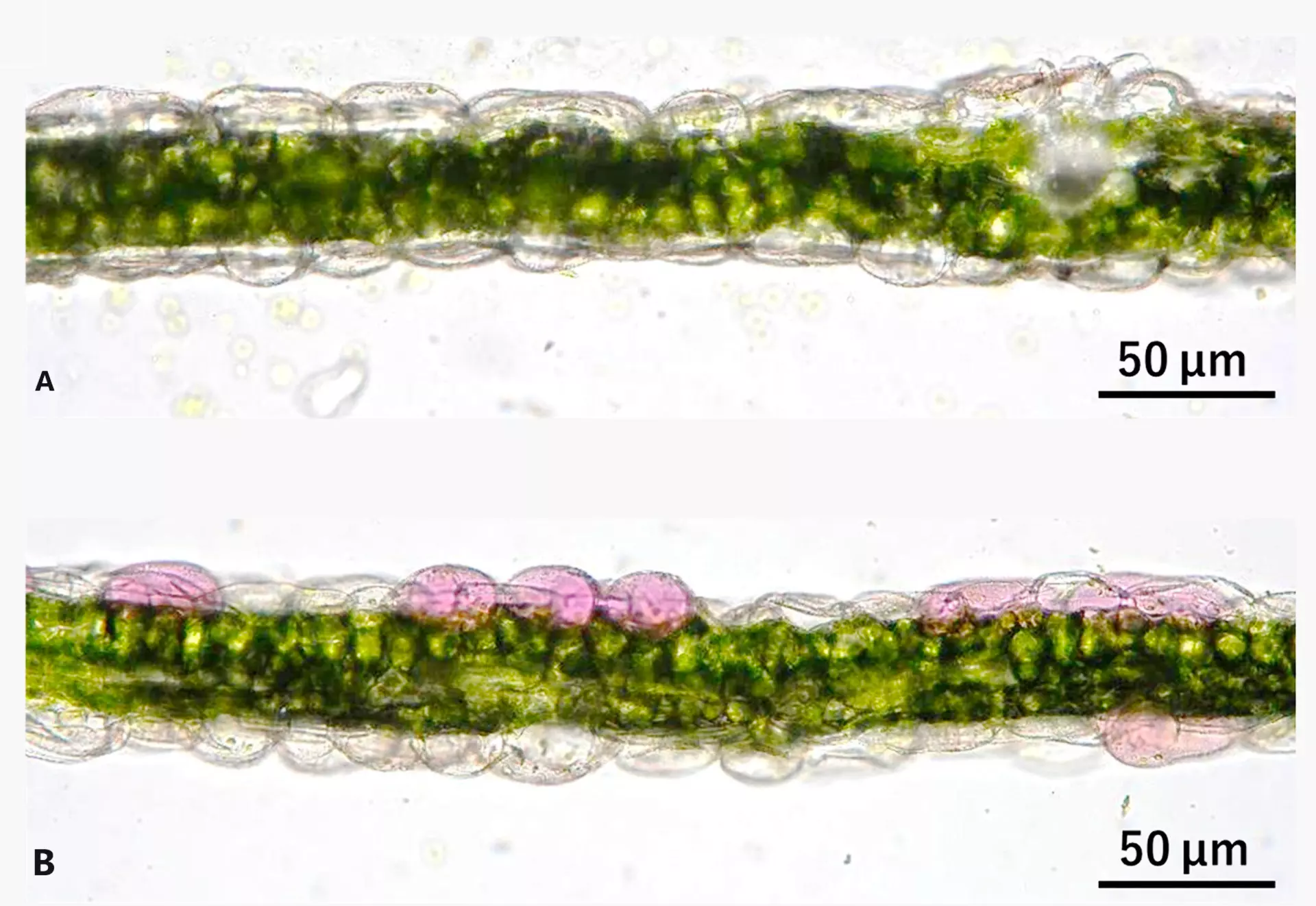
In the green leaf, the sunlight entered unhindered. B) in red leaf, anthocyanins formed a layer at the top acting like a sunscreen, arresting the sunlight into the leaf.
In addition, the plant physiologists found that the anthocyanins act like ‘sunscreens’ for the ageing leaves, where much of the chloroplast has deteriorated. The young and vibrant leaf is full of chlorophyll, which gives it the typical green colour. However, in deciduous plants, as they age and reach the soon-to-be-discarded stage, the chlorophyll in the leaf starts to break down. The near-senescent leaf still has to produce energy through photosynthesis, using whatever chlorophyll remaining. But the left-over chlorophyll obviously cannot absorb all the sunlight descending on the leaf. Anthocyanin, mainly synthesised near the leaf surface, acts like a sunscreen. They form a layer on the top of the leaf, absorb sunlight from blue-green to orange wavelengths (495–644 nm), and dissipate the excess light energy. The anthocyanin layer shields the leftover leaf chloroplasts from extra sunlight. Red protects the weak!
Experiment
The relative abundance of the green-leaved and red-leaved creeping woodsorrel between urban and green spaces might just be a coincidence. It may be just a Kākatālīya hetvabhasa (also known as the fallacy of post hoc ergo propter hoc) occurrence of events simultaneously without any causal connection.
The researchers experimented to establish the connection between heat stress and leaf colour. The researchers constructed two growth chambers, one providing normal non-stressed controlled growth conditions, with 25C temperature and 60% humidity and the second a heat stress condition, with elevated 35C temperature and 60% humidity. They planted seeds of both the green-leaved and red-leaved and compared. After four weeks and seven weeks of cultivation, the dry weight of the green-leaved plants was considerably more significant than the red-leaved in non-stressed conduction. Further, the number of seedpods of green-leaved was higher than the red-leaved, indicating the survival fitness of the green-leaved. This was no surprise.
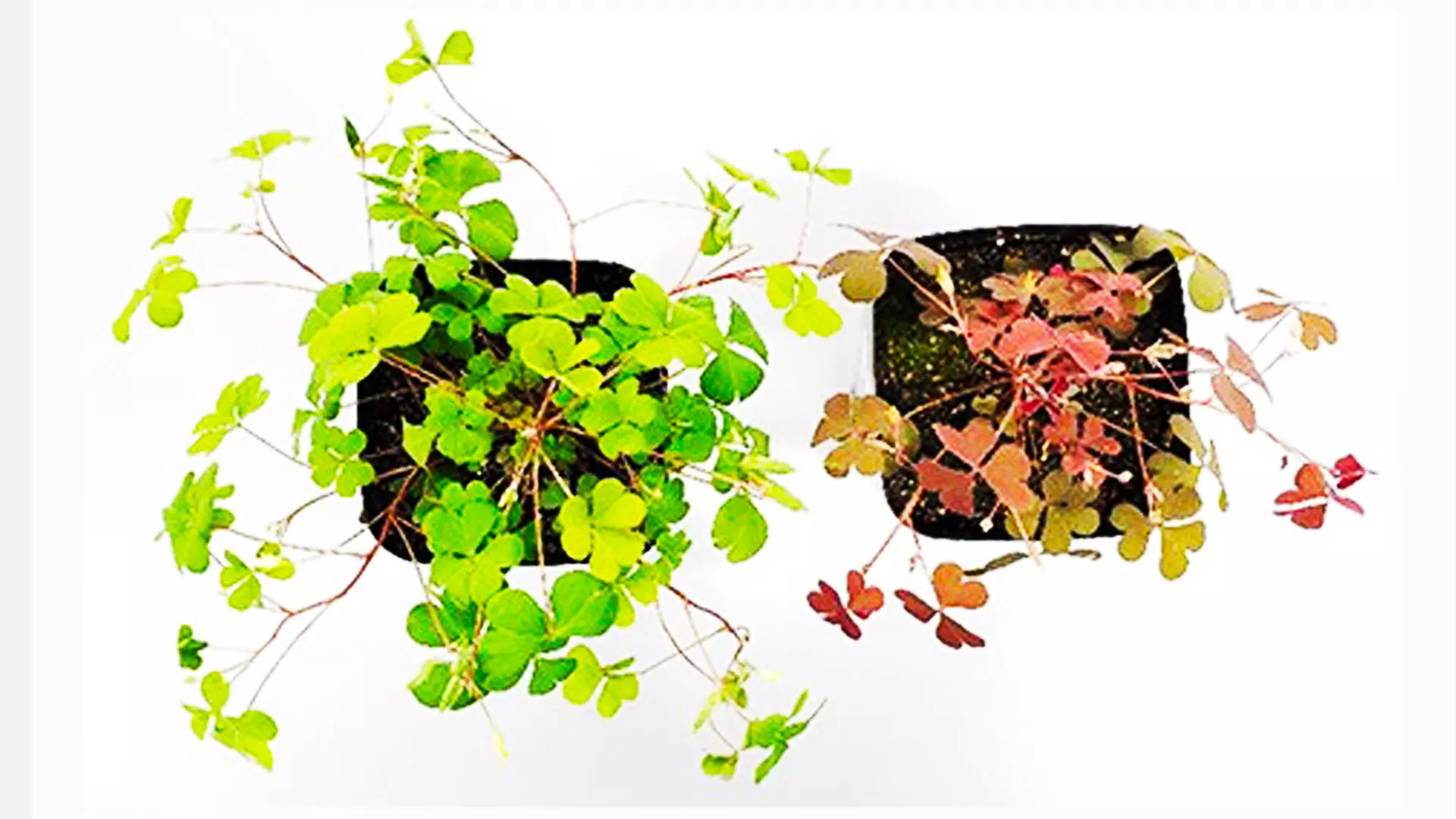
In non-stressed conditions, the growth of the green-leaved was greater.
In red-leaved plants, a layer of anthocyanin arrests the amount of sunlight falling on the chlorophyll. Hence, the photosynthetic efficiency of red-leaved is naturally less compared to green-leaved. Consequently, the green-leaved have a competitive advantage over the red-leaved. The study confirmed this.
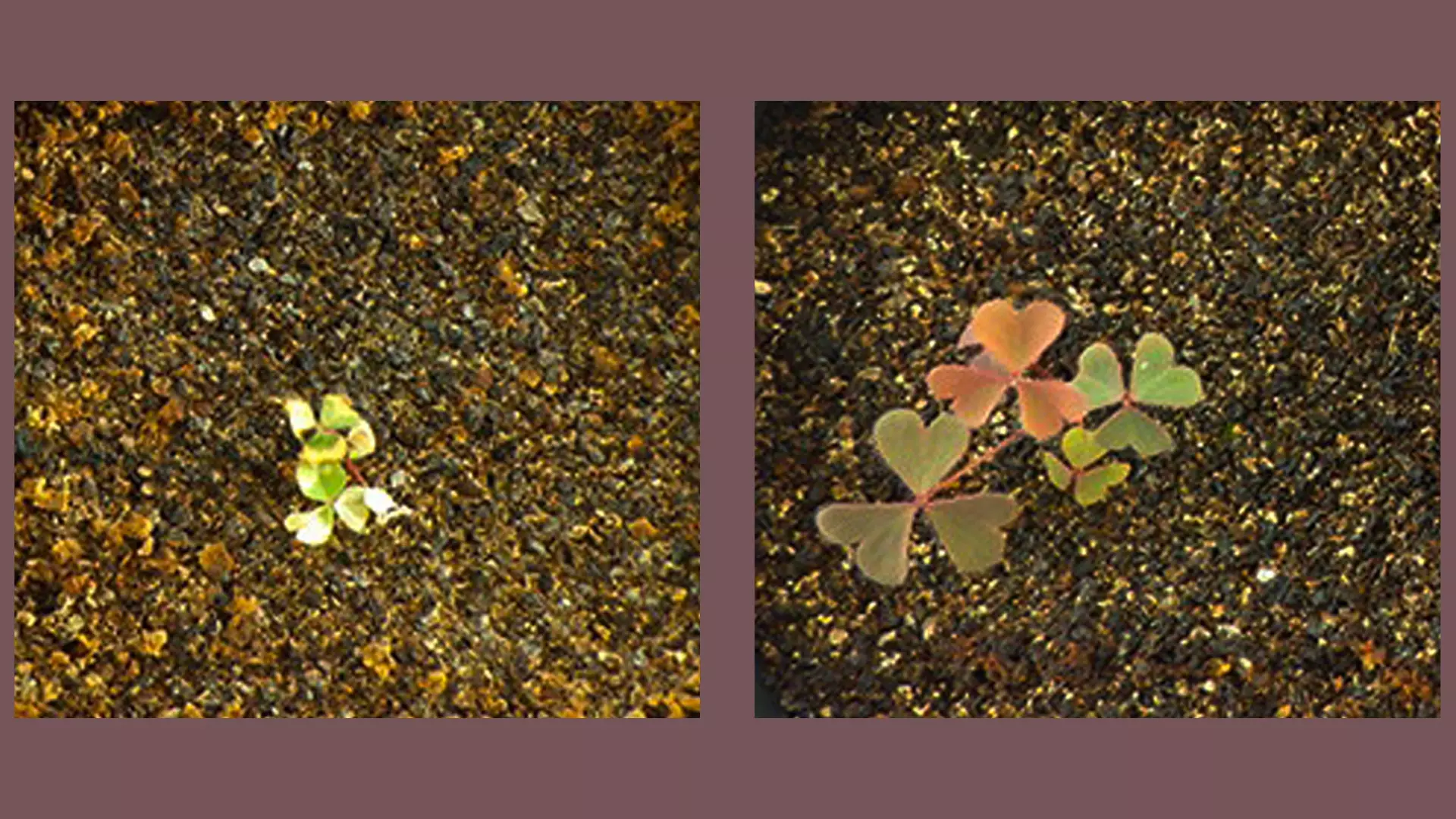
Under the heat-stress condition, the red-leaved plant was more successful.
However, red-leaved plants had a higher growth rate under heat-stress conditions. The anthocyanin sunscreen helped the red-leaved to survive the harsh environment and procreate, while the green-leaved was disadvantaged.
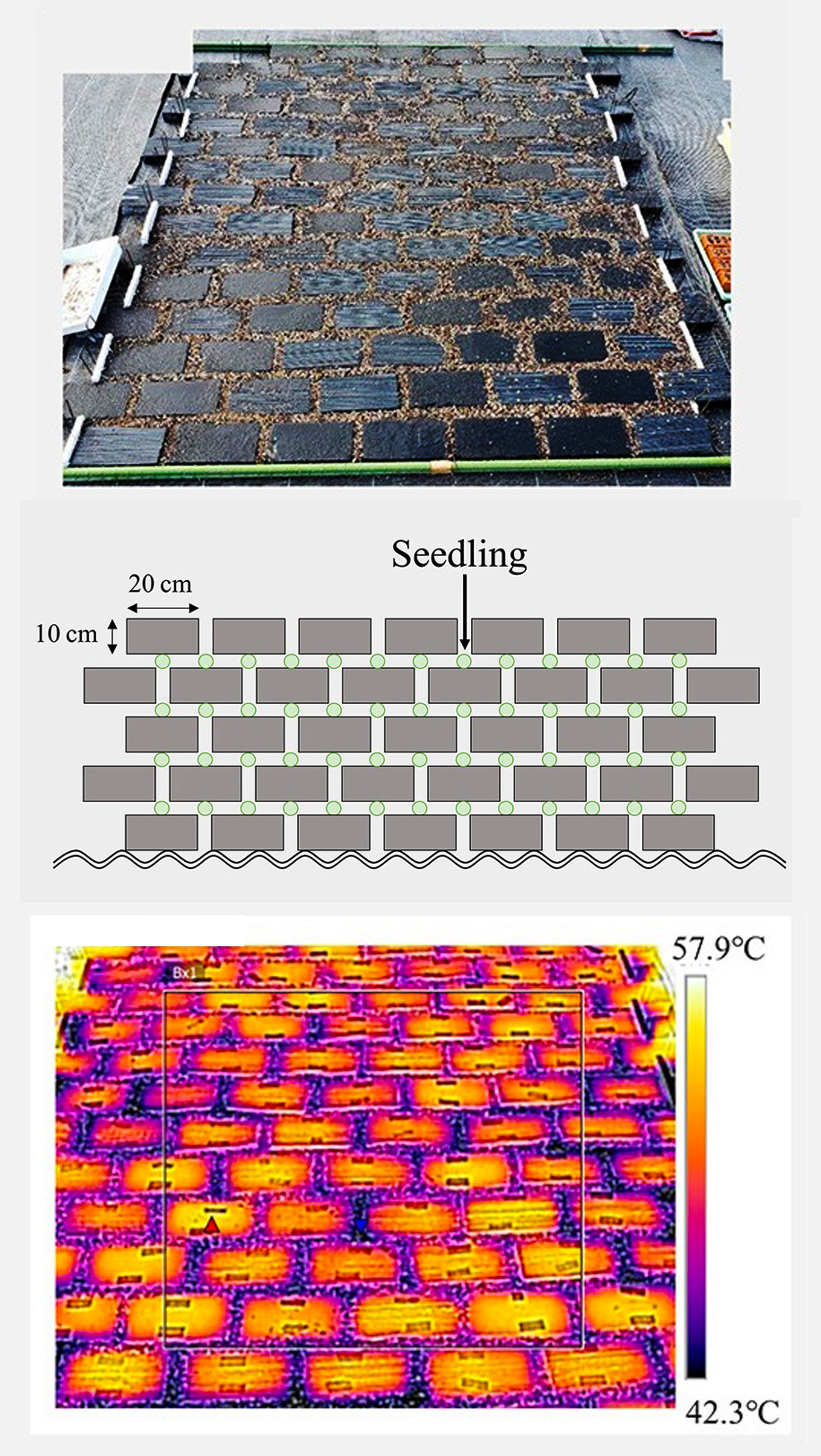
In the experimental brickyard simulating pavement, the temperature was high, and the red-leaved plant scored better.
The researchers carried out another experiment, mimicking the urban landscape. The researchers created a brickyard plot simulating an urban roadside in their laboratory. The paved surface had a high surface temperature. Further, with the surface being impervious, it was a drought-like growth condition. On the other hand, with little gap between the bricks, only one or two plants could grow through the tiny cavity; hence, there was no severe plant-plant competition for sunlight or resources. In this 'urban-like' environment, the red-leaved plants scored well. Red-leaved seedlings had lower mortality, survived the heat and drought stress and produced more seed pods than the green-leaved ones.
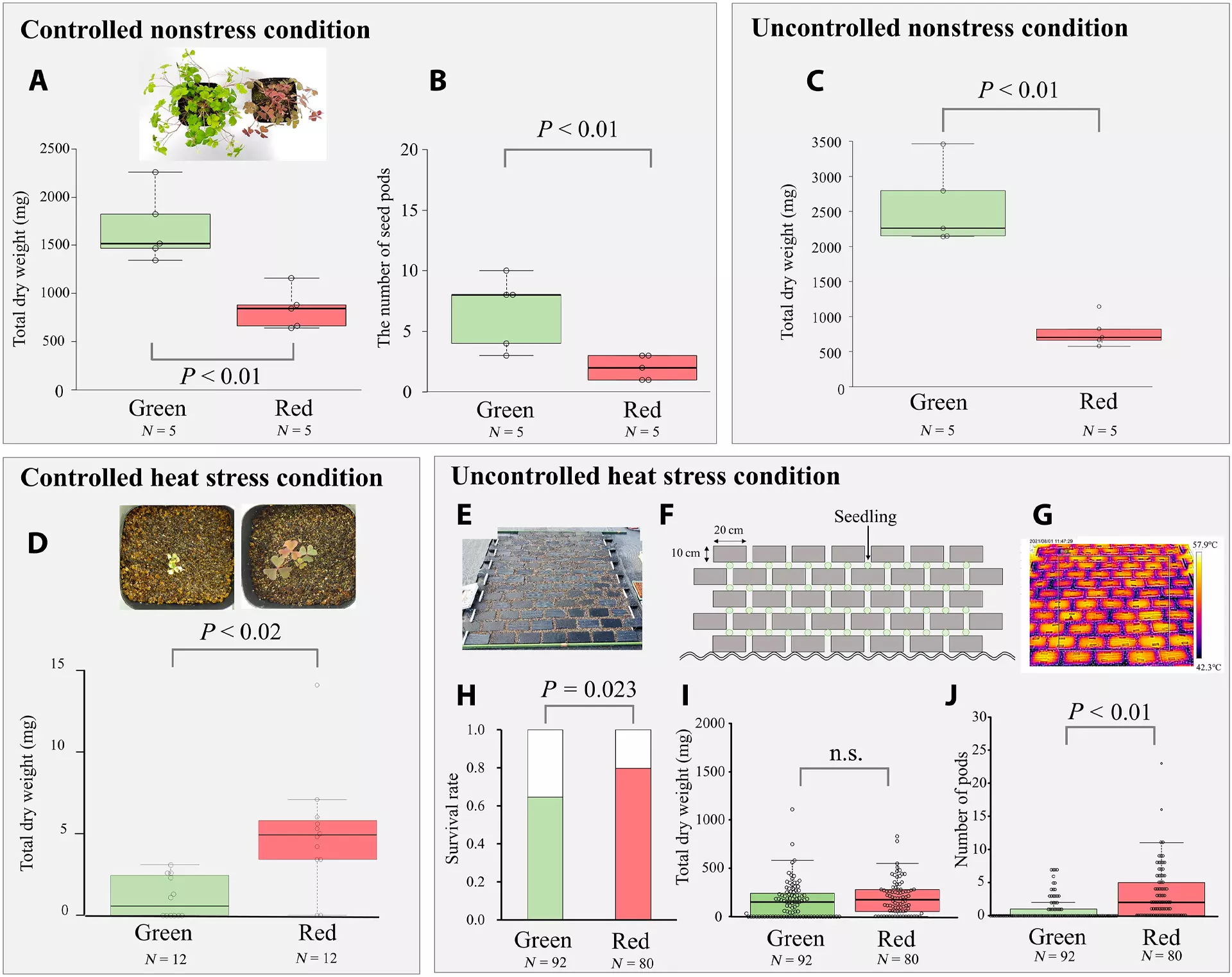
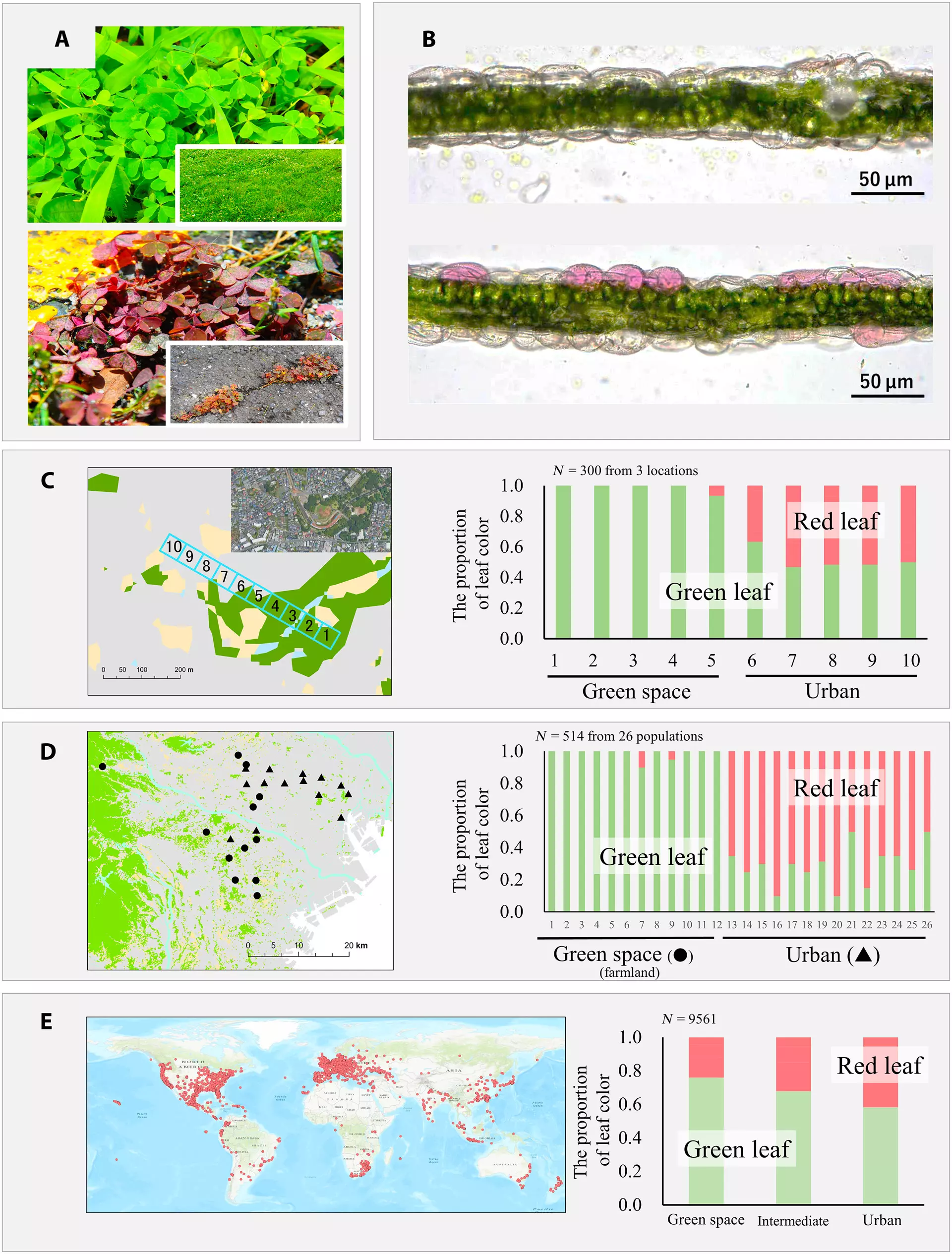
The researchers say how and why the red-leaved variety evolved in pre-urban environments remains unknown; nevertheless, the results clearly show that the red leaf phenotype evolved in Oxalis corniculata in the face of the heat stress caused by urban impermeable surfaces. Consequently, this study has “important implications for predicting and mitigating the evolution of wild species and crop breeding strategies in the face of ongoing and future global warming”, the authors point out.

